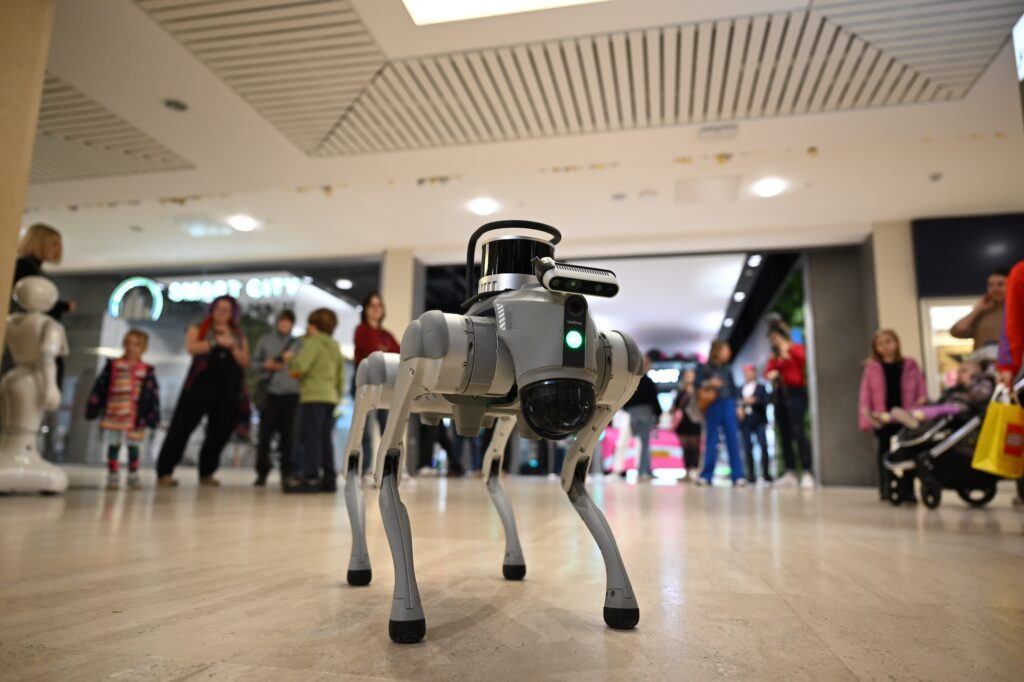Inspired by the human eye, our biomedical engineering lab at Georgia Tech has designed an adaptive lens made of soft, light-responsive, tissuelike materials. Our study is published in the journal Science Robotics.
Researchers at the University of Cincinnati are developing a drone with flapping wings that can locate and hover around a moving light like a moth to a flame.
An international team led by researchers at the University of Waterloo has developed a new material that can be used as flexible artificial muscles to replace rigid motors and pumps in robots and allow them to move more naturally and fluidly.
The bottom line is this: in the age of AI, the winners won’t be the warehouses with the flashiest tools. They’ll be the ones that know how to orchestrate people, processes, and technology into a system that is both efficient and resilient.
Amazon on Wednesday said it is speeding up the automation of its warehouses with the help of artificial intelligence and robotics, raising questions about the future of human workers.
From bananas to burgers, store aisles to sidewalks, an army of robots has descended upon Chicagoland with the singular mission to bring us food.
A wireless eye implant developed at Stanford Medicine has restored reading ability to people with advanced macular degeneration. The PRIMA chip works with smart glasses to replace lost photoreceptors using infrared light. Most trial participants regained functional vision, reading books and recognizing signs. Researchers are now developing higher-resolution versions that could eventually provide near-normal sight.
Researchers at the University of Surrey developed an AI that predicts what a person’s knee X-ray will look like in a year, helping track osteoarthritis progression. The tool provides both a visual forecast and a risk score, offering doctors and patients a clearer understanding of the disease. Faster and more interpretable than earlier systems, it could soon expand to predict other conditions like lung or heart disease.
The Edge Edition was developed through close collaboration to meet the growing demand for compact, mobile cobot solutions. Our R&D team miniaturized the controller to just 10% of its original size and integrated it into the cobot’s base.
The Edge Edition was developed through close collaboration to meet the growing demand for compact, mobile cobot solutions. Our R&D team miniaturized the controller to just 10% of its original size and integrated it into the cobot’s base.

Claire chatted to competitors, exhibitors, and attendees at the Smart City Robotics Competition in Milton Keynes.
This bonus episode was sponsored by euRobotics, an international non-profit association that aims to boost European robotics research, development, and innovation.

For vision engineers looking for a complete solution. Find a complete vision system that reliably acquires images in dust and water. Basler offers all the components for an IP67 vision system and works with you to create the right solution—so you get a system that you can rely on. Our IP67 vision system is designed for vision engineers who want a complete solution. Does one of these statements describe your current situation? Then our solution is the right choice for you.
While the milling process is based on historic tradition, the company’s packaging and product handling takes a high-tech approach: “Our vision is to double the number of people eating Bob's Red Mill by 2030. Automation will help us reach that goal.”
Stanford researchers have developed an innovative computer vision model that recognizes the real-world functions of objects, potentially allowing autonomous robots to select and use tools more effectively.
A new 3D printing technique can create paper-thin "magnetic muscles," which can be applied to origami structures to make them move.

